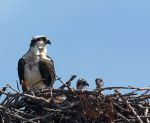This past January I posted some information about the campaign to Wear Blue for Oceans Day. The purpose of this campaign was to call attention to President Obama and Congress to agree to sign and release a national ocean plan. I am happy to post that on July 19, 2010 the executive order was passed.
Read the nitty gritty details straight from the White House here.












What people are saying …